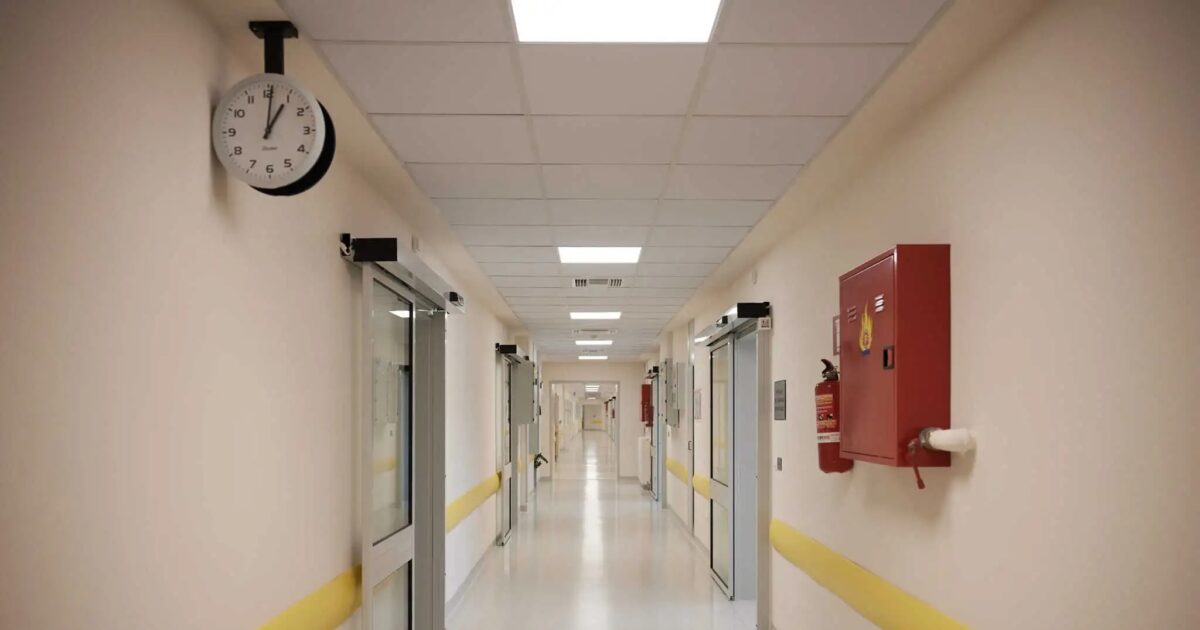Encouraging are the first messages to apply the system with the bracelets In emergency, as they show that there is improvement in patients’ service time in hospital of the Attica Basin.
This positive result – brought about by the bracelets and shows a decrease in half of the half – is a component of many different reforms applied to the Emergency Departments (ICT) of hospitals.
Some of them are: the electronic trace system of patients – the well -known “bracelet” – the changes in the way hospitals, the integration of the Health Centers in the NHS on -call, the building rearrangements and renovations, the recruitment of staff and the integration of the Hellenic Council.
Official data from ten hospitals in which the System with the “bracelet”they prove that more than 44,000 patients have already been tracked, while the average waiting time of patients does not exceed 5 hours and a quarter, time approaching the target set by the Ministry of Health’s leadership to improve the experience of patients in emergency.
Last February, when Health Minister Adonis Georgiadis presented the first after decades to reduce the waiting time in on -call time, the average waiting time in large hospitals exceeded 9 hours.
His commitment to falling in five hours seems to have been reached, although these times are still extremely large.
Bracelet: Items from 10 Hospitals
“The” bracelet ” – according to the Minister of Health – is no longer disputed by anyone. One of its first results is that it has brought calm and order to hospitals.
‘The big groan has stopped, The patient knows where he will go, in what order, and there are no discussions About priority, “the minister noted.
The electronic trace system also helped detect delays in real -time on -call on -call delays.
It was initially implemented in mid -May in the Evangelism, followed by the hospitals oncology “Agioi Anargyroi”, “Gennimatas”, Kat, “Aglaia Kyriakou”, Laiko, Sismanoglio, University of Patras, “Hagia Sophia” and Atticon.
44,032 patients have served in the on -call hospitals, according to recent data from the Ministry of Health.
The highest waiting time is recorded in “Evangelismos” Hospital and it’s 5 hours and 16 minutes.
They follow:
- The “Gennimatas” with 5 hours and 13 minutes,
- Atticon with 4 hours and 31 minutes
- Kat with 4 hours and 27 minutes.
A lower average residence time in Emergency is currently observed at Agia Sophia Children’s Hospital and is 2 hours.
Waiting per severity of incident
The waiting time for the most serious incidents, the “red”, based on doctors’ evaluation, exceeds 4 hours.
Specifically, the following times were identified by category of incidents:
⦁ “Red” (emergency/serious): 4 hours and 33 minutes.
⦁ “yellow” (medium): 4 hours and 18 minutes.
⦁ “Green” (lightly): almost 3 hours.
The waiting per clinic
Within the ICTs the highest waiting is recorded in the pathological clinics. In particular, the average waiting time of patients until they are examined in a pathological clinic is almost 2 hours.
In cardiac clinics the average waiting is one hour, in surgical clinics under hour and in radiological medical clinics less than a quarter of an hour.
It should be noted that the “Agios Savvas” hospitals, Pentelis, Ioannina and Karpathos, have now joined the system, which have not yet collected data.
By the end of September, however, The “Bracelet” will enter the Hippocrates Hospitals of Thessaloniki, AHEPA, “Papanikolaou”, “Sotiria”, Asclepius Voula, Thriassio, Nice State, Arta, Ioannina “Hadjikosta” and Preveza and until the end of February 2026 and in the rest of the NHS hospitals.
Other measures that bring the difference
The “bracelet” is a “link” of the chain of measures taken by the ministry to reduce the waiting for on -call.
Recent innovations also include the integration of all hospitals into morning on -call. This measure – which the ICT staff put on a lot of pressure and encountered reactions from NHS employees – as Mr Georgiadis himself admitted, reduced 17% of patients in general.
In addition, the Attica have been reinforced with staff and specifically by:
- 188 nurses
- 97 injured carriers
- 30 doctors
- 171 other staff
- Another 87 recruitment of injured and 26 doctors are expected.
Finally, by June 2026, all the ICTs of the Basin Hospitals are expected to have been renovated, which will improve the management of incidents, and by the end of 2025 the medical equipment of ICTs will have been upgraded.
“Our goal is for any month that is going to correct the situation in on -call on -call and by 2027, which will have a good time to the Ministry of Health, to deliver a system to on -call on -calls, extremely better than we received,” Mr. Georgiadis stressed.
In the same context, the Deputy Minister of Health Marios Themistocles He noted: “We want the 500,000 unique patients visiting the basin TEPs annually to find the most appropriate conditions to deal with their health problem with dignity.”
